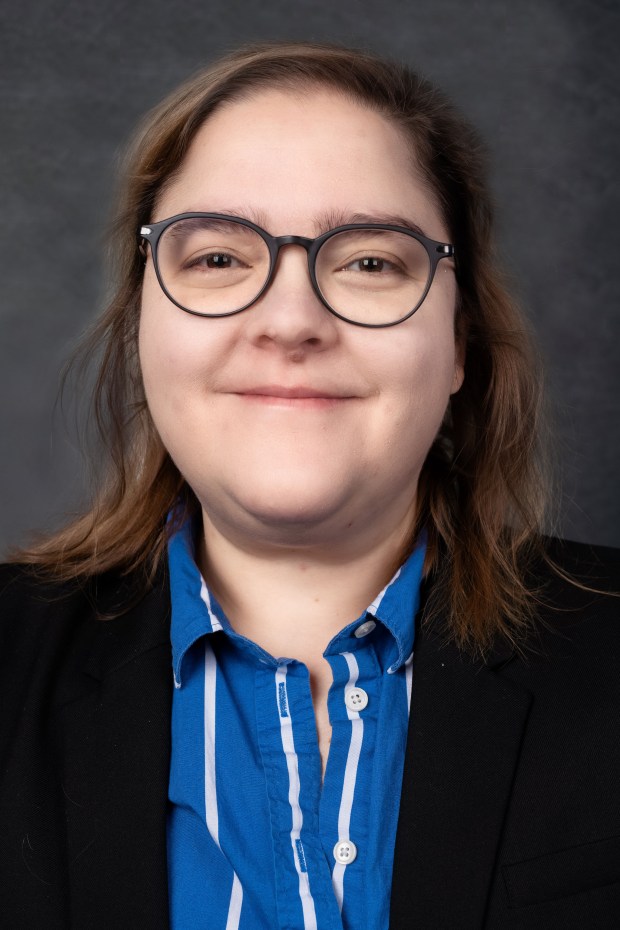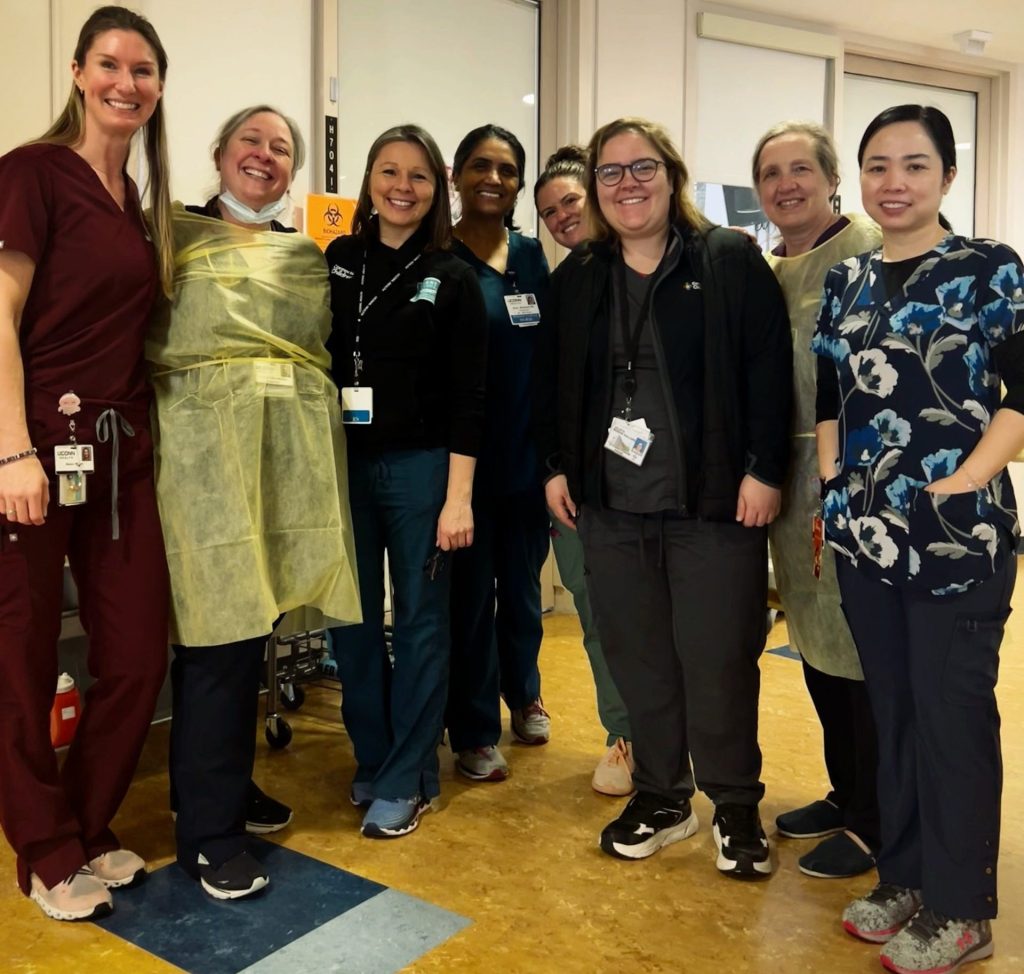Julieta Bonvin Sallago is constantly plagued by the worry that she will not wake up in the middle of the night when her alarm sounds to remind her to take 40 grams of cornstarch.
The household cooking ingredient is the difference between life or death for the lead clinical research associate at Connecticut Children’s and UConn Health who suffers from glycogen storage disease type 1a (GSD1a), a rare inherited metabolic disorder.
Now for the first time in her life, Sallago is hopeful the world’s first cutting-edge gene-editing clinical trial for the rare genetic disease will potentially offer treatment for the disorder which can lead to long-term health problems including liver, kidney disease and cancers.
UConn Health in collaboration with Connecticut Children’s and Beam Therapeutics is using gene-editing technology on the first human patient in the world in a clinical trial studying GSD1a, UConn Health officials and UConn Today confirmed.
 Julieta Bonvin Sallago. Courtesy photo
Julieta Bonvin Sallago. Courtesy photo
Currently there are three companies looking at the DNA and RNA treatment for GSD1a, according to Dr. Rebecca Riba-Wolman, a pediatric endocrinologist and a physician scientist at both Connecticut Children’s Research Institute and UConn Health, who is leading the clinical trial.
“We are on the cusp and looking forward to the future,” Riba-Wolman said. “This allows it to be more possible to take a human and specifically the gene that is incorrect and fix the genetic problem. It is trying to treat a devastating lifelong disease by fixing it at its source. We are able to fix the actual genetic problem to significantly benefit and improve these people’s lives rather than treat symptoms of it. The hope is that we get to decrease and eliminate the use of cornstarch. The ability to fast overnight where you don’t have to worry: Am I going to wake up if I sleep through my alarm?”
The quest to find a cure
Nearly 1 in 100,000 people have GSD1a, Riba-Wolman said.
The genetic disorder impairs the ability of the liver to maintain blood glucose levels, which could lead to serious side effects including seizures, death or damage to the kidneys.
“It is like jumping out of an airplane without a parachute,” Riba-Wolman said. “If they don’t eat, their blood sugar will drop to undetectable very quickly.”
Growing up in Colon, Argentina, Sallago was diagnosed with the genetic disorder when she was 2 months old.
When she was 5 years old in the early 1980s, using cornstarch to maintain blood sugar levels became was implemented, the first breakthrough to treat the symptoms of the disorder. As a result, people were able to continue living with the disorder now into their 50s and 60s.
With the chronic disease, Sallago said she is unable to eat fruit and must stay away from carbohydrates. She is on a strict diet. The consistent cornstarch can cause her GI issues and she also must make sure she is taking it every four hours.
She often contemplates how the disease may impact her kidneys and liver.
She said she is grateful that she is now healthy. But in an instant things can change.
“This is life,” she said. “Everything can be good now and in a matter of minutes and hours you don’t have access to the care you need and you can have a seizure or die in the ICU.”
She remembers hearing of times when her parents overslept and awoke to find her having seizures.
She puts her alarms away from her bed to ensure that she wakes up in the middle of the night when they go off.
And the cornstarch causes concerns about weight gain, she added.
“When you meet with families of young children with GSD1a, they are terrified,” Riba-Wolman said. “They are afraid they are going to sleep through a dose of cornstarch overnight. It is exhausting. You never get to take a break. It is a chronic disease where 24 hours a day you always have to be thinking about it.”
In 2020, Sallago became a medical doctor in Argentina and then made her way to the U.S. to work on glycogen storage disease research at UConn Health and Connecticut Children’s.
Gene editing
The clinical trial marks a “groundbreaking achievement for the treatment of GSD and similar rare diseases,” said Dr. Juan C. Salazar, chair of the department of Pediatrics at the UConn School of Medicine and physician in chief at Connecticut Children’s, according to UConn Today.
A person’s DNA is made up of different nucleotides that make specific amino acids, the building blocks for life, said Shaylee King, administrative director of the Department of Pediatrics at UConn Health.
“Gene editing targets the mutation in your DNA and replaces it with the correct DNA,” she said. The cutting-edge therapy is based on the CRISPR-Cas genetic-editing technology, which was awarded the Nobel Peace Prize in 2020, according to Riba-Wolman.
Riba-Wolman said the trial includes 36 patients and will be continue over several years.
“These are long-term complex trials,” she said. “These are very labor intensive. These patients are going to be followed over several years.”
Animal studies have shown that the gene editing trial is beneficial to the liver, Riba-Wolman said.
She said GSD1a patients taking part in the study are hoping that small children do not have to go through what they went through.
“It is a horrible disease they have dealt with every day of their life,” she said. “They see the future and how they can play a role in making this easier for future generations.”
Originally Published: July 17, 2025 at 6:00 AM EDT

